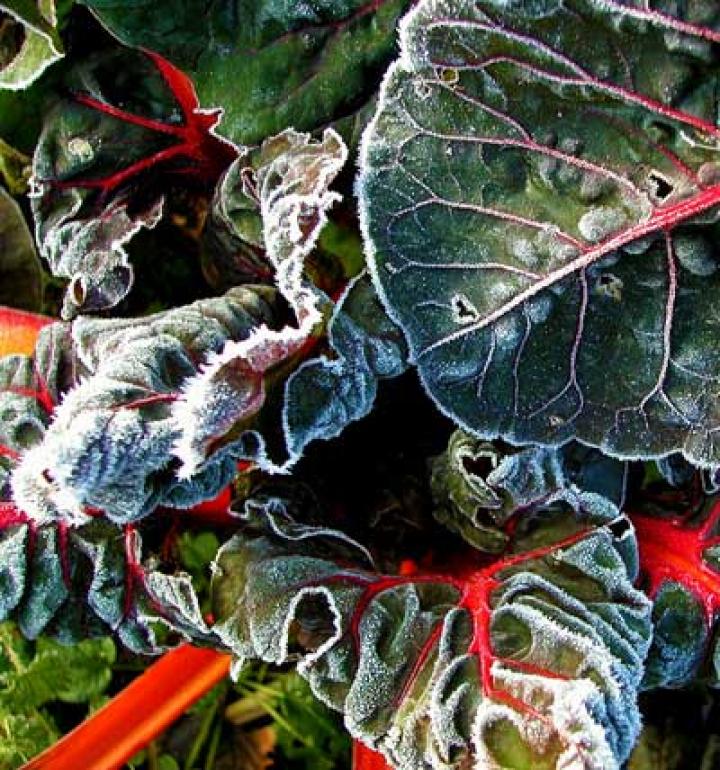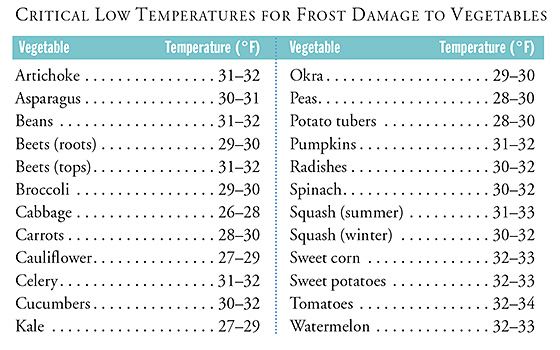
Protect your garden from frost with the different ways through which you can reduce the amount of cooling in and around your garden.
- Your garden will warm up more during the day if it slopes toward the Sun. Residual heat in plants and soil may determine whether your garden sustains frost damage during the night. Cool air, which is dense and heavy, will flow away from plants growing on a slope—what the experts call drainage.
- A garden on a south-facing slope offers two advantages: more exposure to the Sun, and better drainage of cold air. In deep valleys, nighttime temperatures may be as much as 18° F lower than the temperature on the surrounding hills.
- Trees surrounding your garden act like a blanket and reduce the amount of heat radiating from the soil, perhaps keeping the temperature high enough to protect your plants from early fall frosts.
- A stone wall benefits the garden by acting as a heat sink, absorbing warmth from the Sun during the day and radiating it slowly at night. The water in a nearby lake or pond (if it is one acre or larger) does the same.
- Moisture is also a player in determining whether frost will nip your tomatoes. When moisture in the air condenses on plants and soil, heat is produced, sometimes raising the temperature enough to save the plants. On the other hand, if the air is dry, moisture in the soil will evaporate, removing some heat.
- Good soil, full of organic matter, retains moisture, reducing the rate of evaporation. Mulch also helps prevent evaporation.
- Plants themselves can modify cooling. Dark ones with a maroon or bronze cast may absorb more heat during the day. And those that have been planted close together create a canopy that entraps heat from the soil. More important, a plant’s coldhardiness determines its ability to withstand colder temperatures.
If it has been a glorious fall day, with a clear sky and low humidity, chances are that temperatures will drop enough at night to cause frost. If you decide that frost is a possibility, cover your plants, especially the tender ones like impatiens, peppers, and tomatoes. Use newspapers, straw, old sheets and bedspreads, plastic tarps, or evergreen branches. Cover the whole plant; you’re trying to retain radiated heat. It’s best to have all covers in place well before sunset.
The first frost of the fall is often followed by a prolonged period of frost-free weather. Cover tender flowers and vegetables on frosty nights, and you may be able to enjoy extra weeks of gardening.
Click to read more tips on how to predict that a frost is coming.
When the sky seems very full of stars, expect frost.
–Weather Lore

Tip: In late fall, spread a heavy layer of newspaper (topped off by fall leaves) over a portion of a carrot, parsnip, beet, or rutabaga row to allow these root crops to overwinter in the soil without freezing.
Designing Your Garden to Consider Frost
The Almanac Garden Planner uses averaged frost data from nearly 5,000 weather stations across the U.S. and Canada and is therefore much more accurate than the zone system.
To benefit from this, consider purchasing a subscription for the coming season. Click to learn all about our Almanac Garden Planner!







